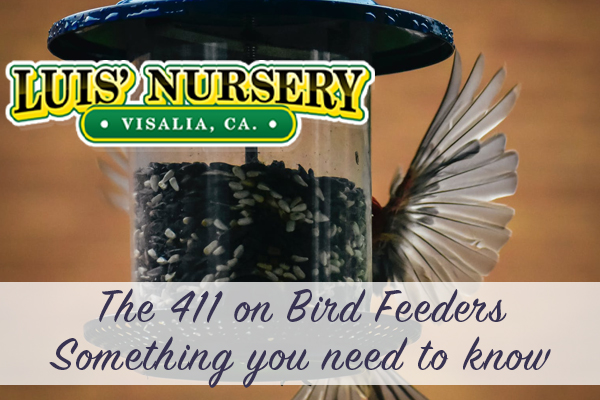Recently we talked about birdscaping, aka designing your landscape to attract more birds, and the best tips to installing a bird bath. Bird baths and bird feeders are just two objects that you can add to your landscape to increase bird traffic. Aside from these two things you can also plant seed-producing plants, provide naturally sheltering plants such as shrubs and trees, and increase the color of your birdscape so it’s a more visibly attractive oasis from the sky. Once birds get to your yard, you want to be sure and keep them safe. One way to do this is by making sure you’re providing them with clean and safe water and food.
Why clean your bird feeder often?
Bird feeders are awesome in that they provide food that attracts a wide variety of birds, but they can also be potentially dangerous. How so? Birds are beautiful, but some may carry germs that can make other birds sick. Salmonellosis, avian pox and mycoplasmosis are just a few diseases that can be transmitted from the multiple birds visiting your feeders. Don’t let these diseases scare you! Prevention is key. Cleaning your feeder often will keep them at bay.
How to clean your bird feeder
It’s important to wash your feeder at least once a month to prevent a buildup of bacteria. If you have a heavy migration period with increased usage it would be wise to increase the cleaning frequency as well. If your feeder is empty, a sure sign of a lot of use, it’s a great time to give it some attention before the refill.
- Scrape away debris and seeds that are leftover – Remove any seeds and debris and throw them away. If anything is stuck, try and use a tool to take apart or scrape out any potentially rotting seeds. Don’t even think about using leftover seeds as these can carry harmful microorganisms. Do your best to not leave anything behind and have the feeder as clean as the day you brought it home.
- Scrub it and soak it – Use a utility bucket or bucket filled with hot water to disinfect. It’s best to avoid washing this in your sink. You don’t need to use dish soap unless you’re finding hard to remove seeds or debris. If you do use dish soap it’s important you get it all off. Next, use a 9 to 1 bleach water solution to scrub your feeder with a brush and let it soak after. You can sub in vinegar if you’d prefer over bleach, with a 1 to 1 ratio. Do not use vinegar if the feeder is powder coated or made with plated metal! When you’re done cleaning allow the feeder to air dry.
What about your hummingbird bird feeder?
It’s important to change out your nectar at least every 3 to 5 days and clean the feeder at least once a week or more. A hummingbird feeder can be cleaned using hot water and a bottle brush. Do not use any soaps or detergents! You can use the same bleach water solution as before, but make sure you rinse it very well.
We look forward to hearing about and seeing the bird feeders and bird baths you add to your landscape this year. Please feel free to share some pics or come in and chat with us!



